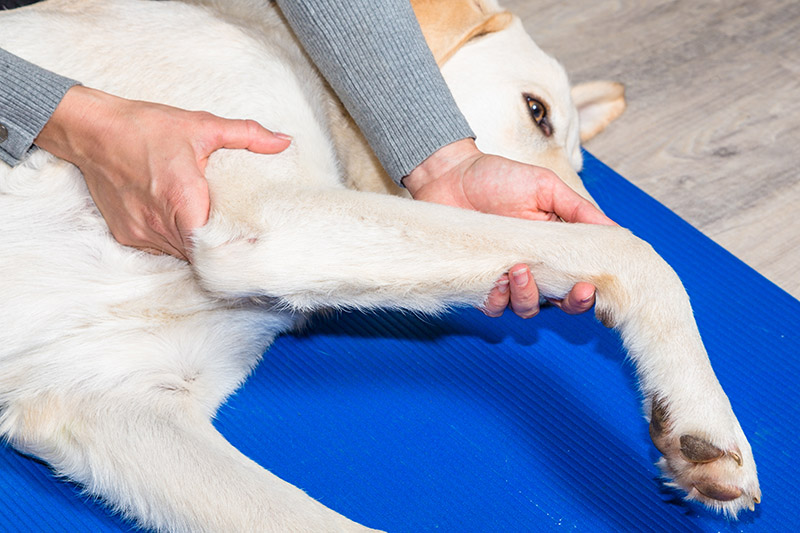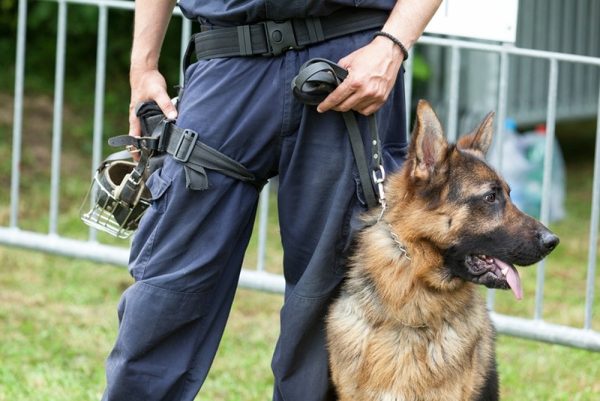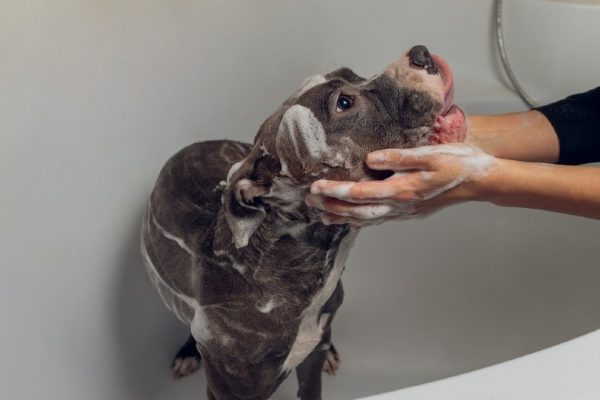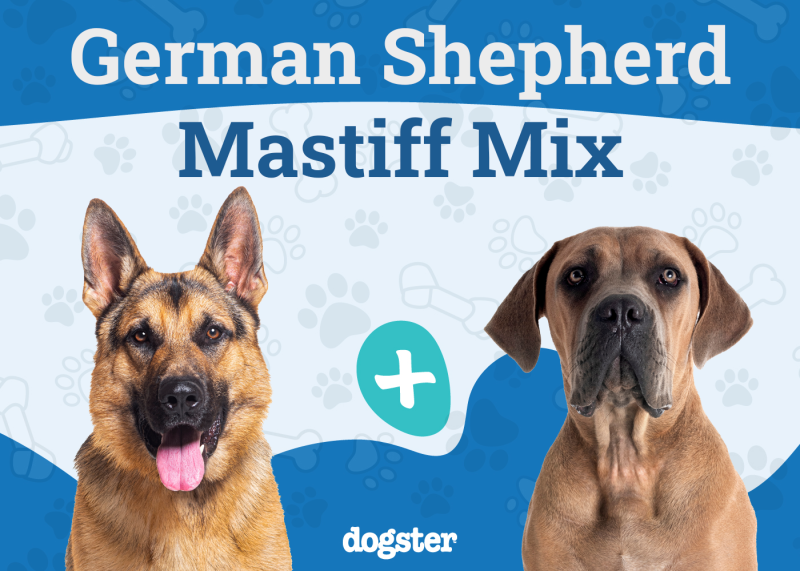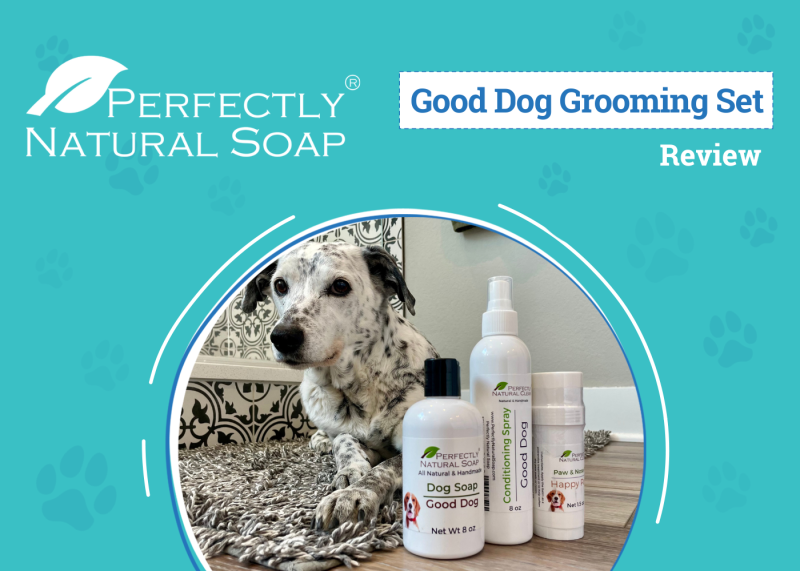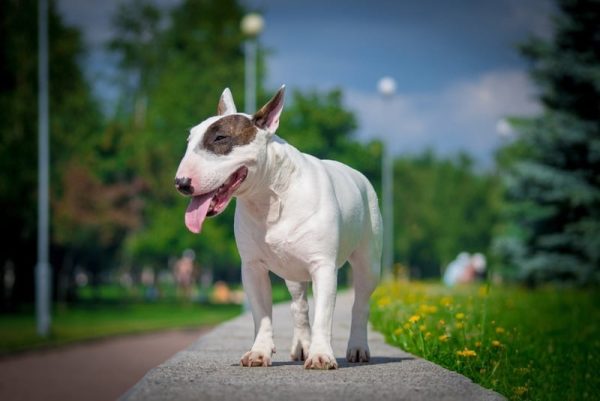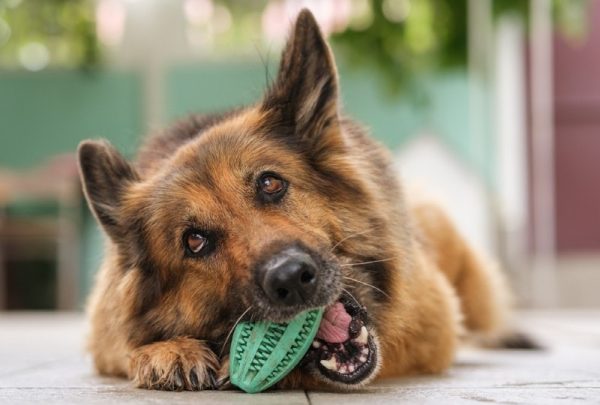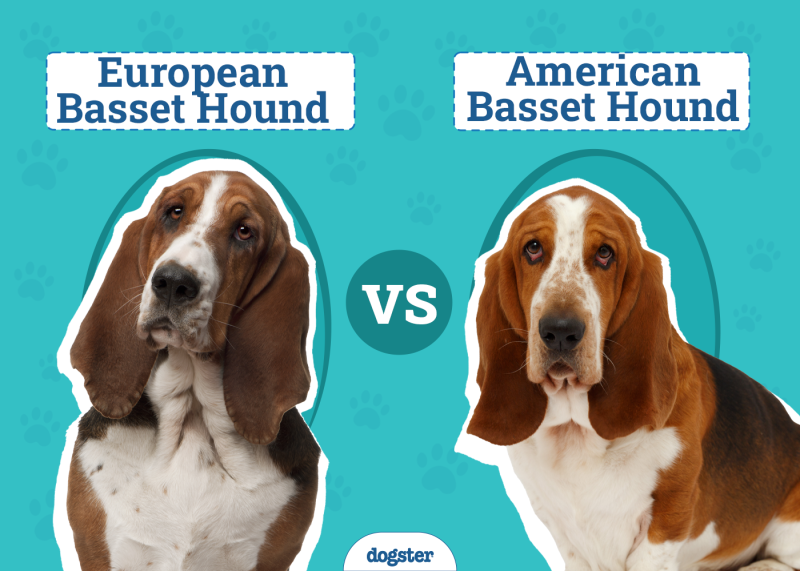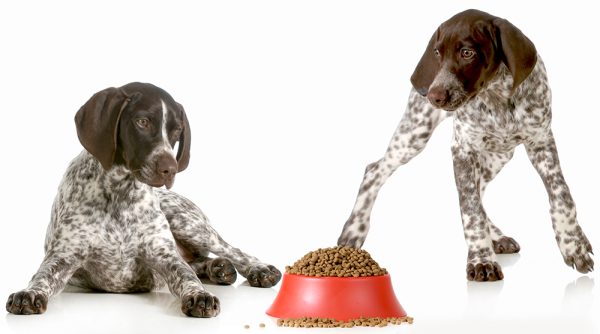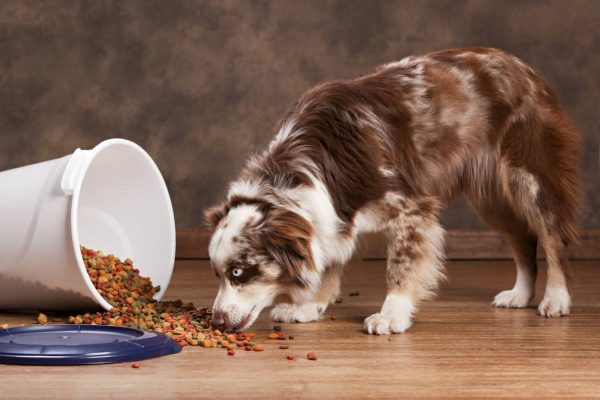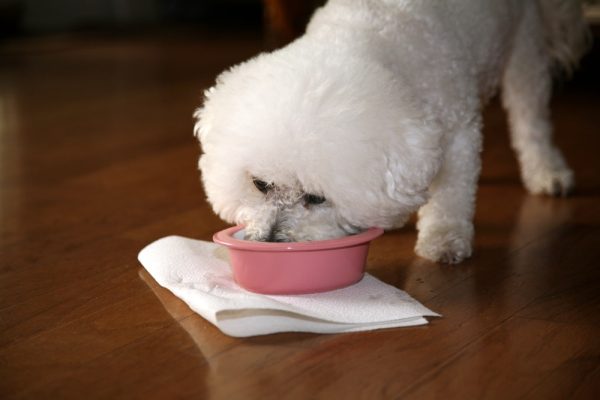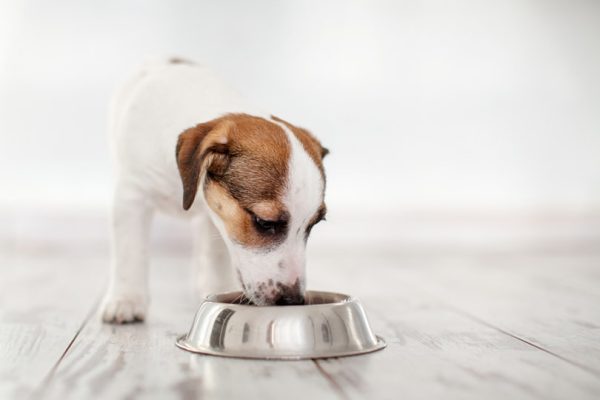In this article
View 2 More +The cranial cruciate ligament (CCL) in dogs is equivalent to the anterior cruciate ligament (ACL) in humans, so for ease of understanding, this ligament is often referred to as the ACL in dogs.1 It connects the large bone above the knee (femur) to the bone just below the knee (tibia). Partial to full tears of this ligament are common, especially in certain breeds, including the Labrador, Rottweiler, Newfoundland, Bullmastiff, Bichon Frise, and Golden Retriever.

How Do I Know If My Dog Tore Their ACL/CCL?
In full tears of the ligament, dogs will suddenly become mostly or fully non-weight-bearing on the affected leg. Partial tears may not cause your dog to stop bearing weight on their leg altogether, but limping and ginger handling of the leg are likely. While these tears can occur seemingly at random, the ligament injury is usually the result of a slow degeneration that has been taking place without obvious signs over a longer period. Sudden traumatic rupture to a healthy ligament can occur in people but is less common in dogs. Excess body weight is a risk factor for cruciate ligament disease, as are genetic factors, confirmation, and inflammatory conditions of the joint.
If you think there is a possibility that your dog has torn their ACL, it is extremely important that you have them evaluated by a veterinarian. You should never attempt to perform any at-home treatments until directed by a veterinarian. Never administer over-the-counter medications without veterinary guidance, including pain medications.
While this kind of ligament tear isn’t an immediate emergency, it should be assessed by a vet as soon as possible. Not only can a vet diagnose whether there is a tear present or another problem that is causing similar signs, but they can also assess the severity. Mild tears in smaller dogs may be able to heal with rest and therapy, while complete tears typically require surgery and a long recovery period.
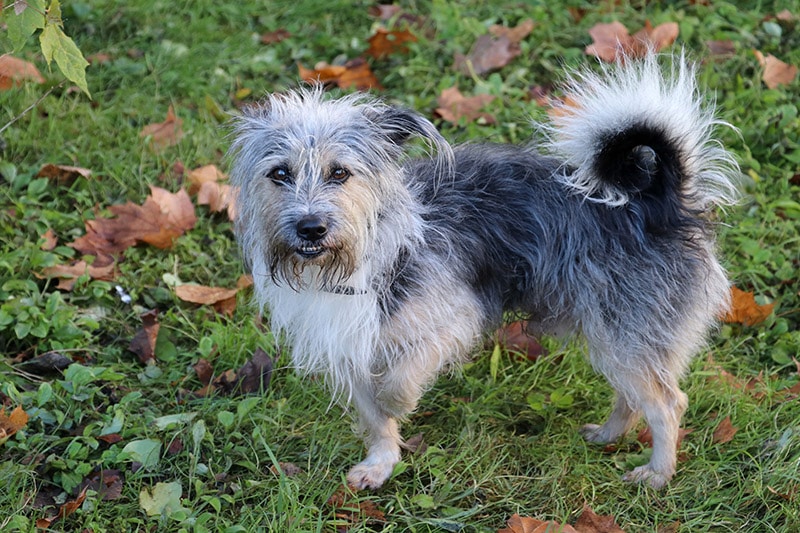
Why Perform a Massage?
If your dog has been diagnosed with a tear, you should discuss any at-home therapies and treatments with your vet first. If possible, talk to your vet about getting a referral to a specialty rehab facility. A rehab veterinarian or certified canine rehabilitation therapist is properly trained to give you guidance on what you can do at home.
However, the purpose of massage related to an ACL tear in dogs is not to help the tear itself. When a tear occurs, swelling will occur in the tissues around the knee, and the muscles in the leg and hip can become tight. If the wait for surgery or healing is extensive, atrophy of the muscles may begin to occur. Massage can help to relieve some of the discomfort associated with these signs.
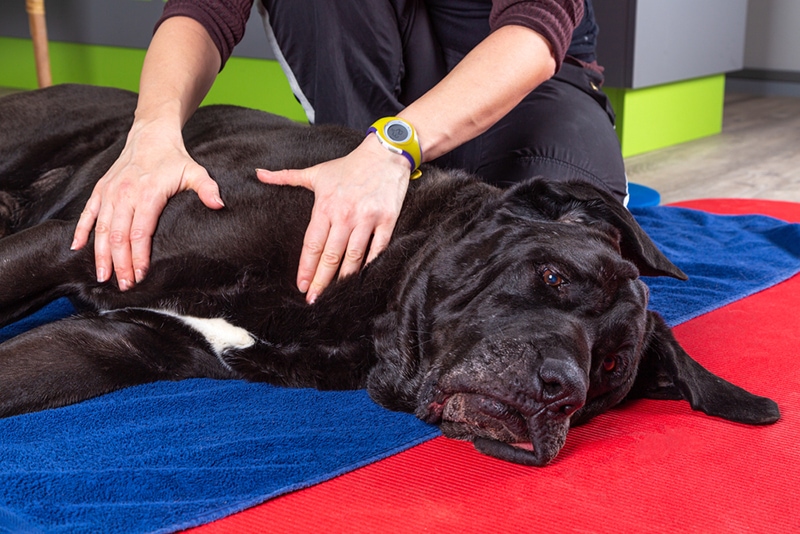

The 3 Steps to Massage Your Dog
1. Help Your Dog Get Comfortable
Your dog is likely to be in pain after tearing this ligament, so it is very important that you use caution when attempting to perform any massage or other actions around the painful area. Even the nicest dogs can bite if they are in pain. If your dog has received a prescription for pain medication, make sure they’ve had a dose recently before performing massage. Also, help them get into a comfortable position that will still allow you access to the injured leg.
2. Reduce Inflammation
Ice is often recommended for acute ACL tears because it helps to reduce inflammation in all of the tissues around the injury. Ice packs, wrapped in a tea towel, should only be used for about 10 minutes at a time, two to three times a day. Another benefit of ice is that it can have a somewhat numbing effect, making your dog more comfortable.
Warm packs are rarely if ever, used, especially in the immediate days following the injury or surgical repair. Never attempt to use heat on your dog’s injured leg without professional approval first.
3. Provide Massage
The purpose of massage is to reduce discomfort and muscle tightness, help reduce scar tissue, and stimulate blood flow for healing. Unless you’ve received direct instruction to massage or move your dog’s injured knee, you should not attempt to massage this area. The goal of massage is to focus on the muscles above the knee.
Using firm, stable pressure, massage the large muscles at the front (quadriceps) and back (hamstrings) of your dog’s thigh. Start your massage near but not on the knee, slowly moving up the leg as you go. The massage should only take a few minutes, so unless otherwise directed, don’t spend more than 3–5 minutes massaging your dog’s leg.
Too much massage can have negative impacts, including increased inflammation and pain, as well as further injury to the knee if performed improperly. If your dog seems in discomfort when you are massaging their thigh, stop and discuss it with your vet before repeating.
If you need to speak with a vet but can't get to one, head over to PangoVet. It's our online service where you can talk to a vet online and get the advice you need for your dog — all at an affordable price!

Conclusion
Massage can be an effective tool to help your dog heal after an ACL tear. Leg injuries should be assessed by a vet to determine if there is a ligament tear or not. If there is, you should talk to your vet in detail about all of the activity restrictions and special considerations your dog will need during their recovery. Also, discuss appropriate medications and home therapies, including massage. Avoid the area right around your dog’s knee during massage sessions, instead focusing on the large muscle groups of the thigh.
Related Reads:
Featured Image Credit: msgrafixx, Shutterstock
